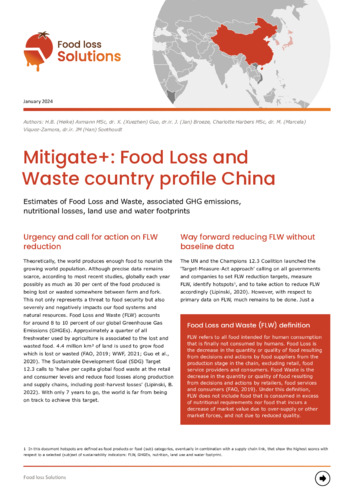Mitigate+: Food Loss and Waste country profile China: Estimates of Food Loss and Waste, associated GHG emissions, nutritional losses, land use and water footprints
Abstract
Theoretically, the world produces enough food to nourish the growing world population. Although precise data remains scarce, according to most recent studies, globally each year possibly as much as 30 per cent of the food produced is being lost or wasted somewhere between farm and fork. This not only represents a threat to food security but also severely and negatively impacts our food systems and natural resources. Food Loss and Waste (FLW) accounts for around 8 to 10 percent of our global Greenhouse Gas Emissions (GHGEs). Approximately a quarter of all freshwater used by agriculture is associated to the lost and wasted food. 4.4 million km² of land is used to grow food which is lost or wasted (FAO, 2019; WWF, 2021; Guo et al., 2020). The Sustainable Development Goal (SDG) Target 12.3 calls to ‘halve per capita global food waste at the retail and consumer levels and reduce food losses along production and supply chains, including post-harvest losses’ (Lipinski, B. 2022). With only 7 years to go, the world is far from being on track to achieve this target.

